5th Generation Gems
Top 10 Overlooked Games from the 5th Generation of Video Games!
This list is all about giving credit where credit is due. Some of the games listed here performed poorly from a retail perspective, some didn’t receive the critical acclaim they deserved, and others have simply been lost to the annals of time. I’ve opted not to include any game that was given a sequel, so don’t expect to see Dragon Force listed here. Games that are part of a series won’t be included either, so games like Suikoden II are ruled out as well. I also decided against including licensed games on this list, as they inherently garner attention by their very nature. Finally, if I’ve already recognized a game as one of the best games on its respective platform, I won’t mention it again on this article. As such, you shouldn’t expect games like Blast Corps or Guardian Heroes to show up. With those caveats out of the way, here are ten games that should have gotten more respect than they were given.
10
Vagrant Story
Sony PlayStation (2000)
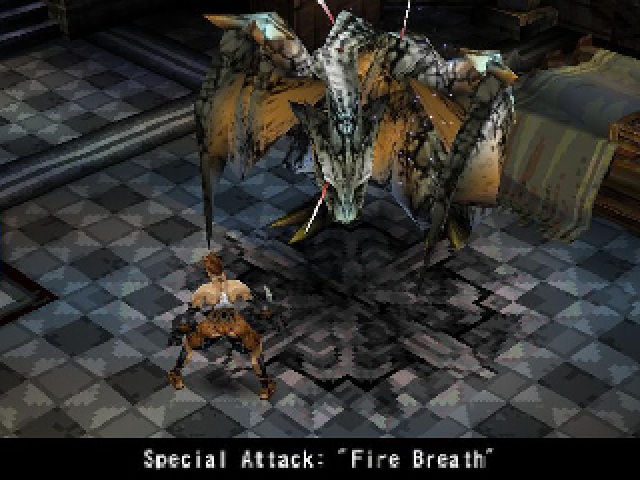
There are several elements that help distinguish Vagrant Story from typical Square-developed RPGs. The gameplay isn’t driven by experience points, there are no shops to visit, and there is limited interaction with other characters. Instead, the game puts emphasis on puzzle solving and strategy. The battle system in Vagrant Story also differs greatly from traditional RPGs. The ability to target specific body parts adds depth to the game, and the manner in which players can chain their attacks together by pressing buttons at the appropriate time almost makes the combat feel like you’re playing a rhythm game. Vagrant Story features various platforming elements too, and players will have to solve a number of block puzzles in order to advance. The game is also noteworthy for a comprehensive crafting system which gives players the ability to customize and modify their weapons and armor. There’s a lot to love about Vagrant Story. The setting is incredible, the gameplay is innovative, and the game keeps the player immersed with one fascinating plot twist after another. The fact that it happens to be one of the best looking games on the PlayStation is just the icing on the cake. Vagrant Story received excellent reviews upon its release and was the third game to earn a perfect score in Famitsu magazine. Despite its quality, it was only a moderate success and sold less than 900,000 copies worldwide. By all rights, the game should be considered a timeless classic, but it was completely overshadowed by Final Fantasy IX and the looming PlayStation 2.
9
Rapid Reload
Sony PlayStation (1995)
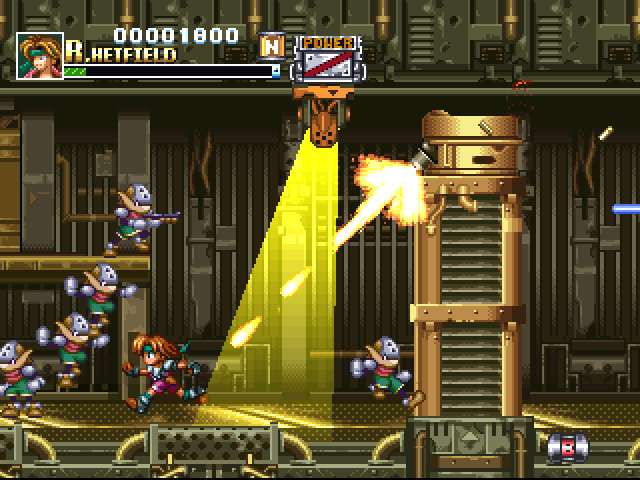
Run and gun games like Contra were vastly popular during the 8-and-16-bit eras, but developers started to abandon the genre during the 32-bit era. Rapid Reload (known as Gunner’s Heaven in Japan) was one notable exception. Developed by Media.Vision, published by Sony, and inspired by Gunstar Heroes, Rapid Reload basically tasks players with shooting anything that moves. The game features the usual assortment of weapons (machine guns, flamethrowers, homing lasers, etc.), but players can also throw their enemies around like rag dolls if they get too close. The game also has a cool grappling hook that allows players to cling to walls and ceilings. The play mechanics are fairly straightforward, but a number of interesting scenarios are presented as you progress through the game. You’ll encounter robotic centaurs in the jungle, take down giant mechs while rollerblading through mineshafts, and take to the skies with a jetpack. Rapid Reload is light on story elements, the gameplay is strictly two-dimensional, and there are no extravagant FMV sequences to speak of. It might have seemed outdated when it was originally released, but it holds up better than the vast majority of PS1 games and is still fun to play today.
8
Silhouette Mirage
Multiplatform (1997)
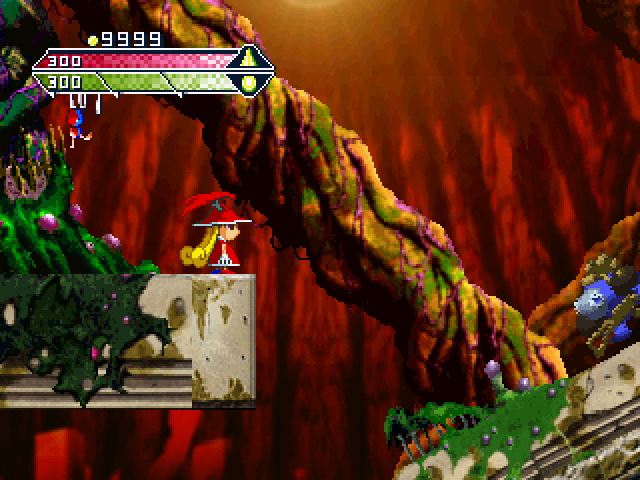
With games like Gunstar Heroes, Dynamite Headdy, and Mischief Makers, Treasure established themselves as an authority on side-scrolling action games. The same standard of excellence can also be seen in Silhouette Mirage. Playing the game, it’s hard not to be impressed by the smooth animation, scrolling effects, and imposing boss battles. You almost get a sense that the Saturn was specifically made for games like Silhouette Mirage, and the PlayStation version was incredible too. The gameplay in Silhouette Mirage is highly innovative and incredibly unique. There are two types of enemies in the game (silhouettes and mirages) and the player has attacks that correspond to each type. Silhouette enemies can only be defeated by mirage attacks, and vice versa. Attacking enemies with the same characteristics (using a mirage attack on a mirage enemy, for example) will steal “spirit power” instead of damaging them. This spirit power is constantly depleted by your weapons, so players will have to decide when to damage enemies and when to steal spirit power from them. Killing everything in sight is not an option, and a certain amount of strategy is required in order to succeed. The complex gameplay might seem intimidating at first, but Silhouette Mirage is instantly fun and incredibly addicting.
7
Radiant Silvergun
Multiplatform (1998)
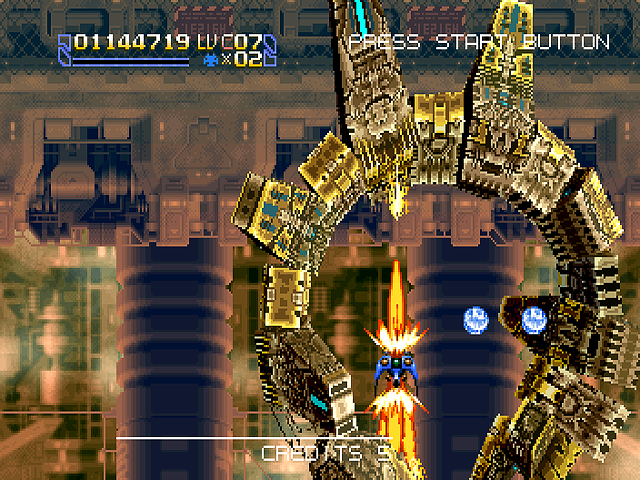
This action-packed vertically scrolling shooter was released in the arcades and the Saturn in 1998, but neither version made it across the ocean. Like most shooters, Radiant Silvergun puts you up against endless swarms of enemy fighters and several imposing bosses. What separates it from most shooters, however, is that there are no power-ups to obtain. Instead, there are seven weapons available from the very beginning. Some of these weapons include homing missiles, side bombs, lightning beams, and even a devastating energy sword for close-range attacks. The player has three buttons to control the weapons, and the weapon fired depends on the combinations of buttons that are pressed. Most enemies are weak against certain attacks, so the key to success is to find the right weapon for the right situation. Treasure has a reputation for making intense games, and Radiant Silvergun is one of their best. Simply put, Radiant Silvergun was the type of game that the Saturn was made for and arguably the greatest 2D shooter of the 32-bit generation.
6
Mischief Makers
Nintendo 64 (1997)
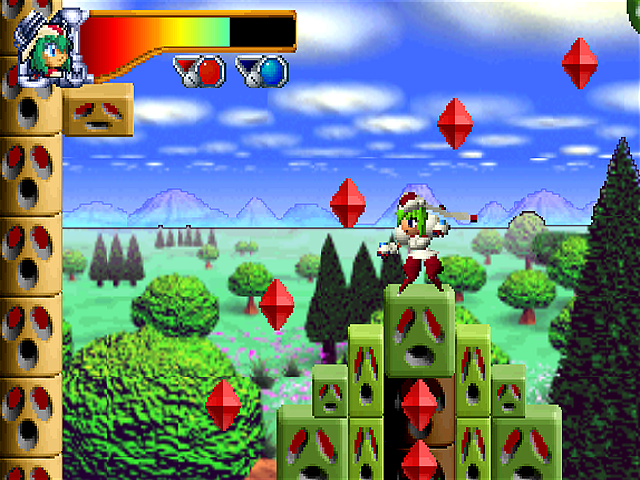
Most developers viewed the Nintendo 64 as a vehicle for polygon-based 3D games with analog controls, but Treasure didn’t forget what brought them to the dance. Mischief Makers is a 2D platformer that could be likened to their 16-bit offerings in many regards. This isn’t to say that the game is derivative, however. It’s more exploratory than typical side-scrollers, and you’ll often be forced to travel through elaborate mazes. It almost feels like a puzzle game at times, and there’s a lot of variety in the game’s 52 stages. The adventure revolves around a robotic maid named Marina who can latch onto floating platforms, enemies, and various obstacles. After she has grabbed ahold of something, she can trigger all sorts of actions just by giving it a little shake. Shaking enemies might cause them to drop gems, while shaking missiles will inexplicably cause them to become larger and more powerful. Marina can even shake her allies in order to coax helpful hints out of them. She also has the option of throwing objects as projectiles, of course, and this is where the game truly shines. She’ll be able to launch everything from shurikens to grenades, and she can even catch laser beams in mid-air! The boss encounters are especially inventive. One battle requires Marina to hit her enemy in the face with its own fists, while another tasks her with shaking negative words and changing them into uplifting statements instead. I really appreciate the game’s sense of humor. Mischief Makers was largely overlooked when it launched in 1997, but the visuals and play mechanics hold up better than most games from the era.
6
Space Station Silicon Valley
Nintendo 64 (1998)
![]()
Space Station Silicon Valley often shows up on lists of underrated games, and with good reason. Although the game got lost in a sea of 3D platformers, it was one of the most unique and innovative games in the genre. The game takes place on a futuristic space station that’s home to a myriad of robotic animals, and stars a robot named Evo who is no bigger than a microchip. The concept revolves around Evo entering the bodies of various animals in order to complete a series of diverse objectives. The idea of killing animals and possessing their lifeless bodies to solve puzzles may seem outlandish and a little depraved, but it’s more fun that it sounds. You’ll have the opportunity to take control of over 40 animals in total, each with their own unique skills. Rabbits are renowned for their jumping abilities, rats can effectively navigate through claustrophobic areas, and bears are notable for their strength. Naturally, becoming a fish will increase your swimming abilities while becoming a bird will grant you the power of flight. Throughout the game, you’ll herd sheep as a dog, throw snowballs as a penguin, and infuriate other animals as a laughing hyena. It’s a little quirky, but players will soon find themselves jumping from one animal to the next as though they were vehicles in Grand Theft Auto. I guess that’s pretty appropriate though, considering the game was developed and published by the same companies that brought us the GTA series.
4
PowerSlave
Multiplatform (1996)
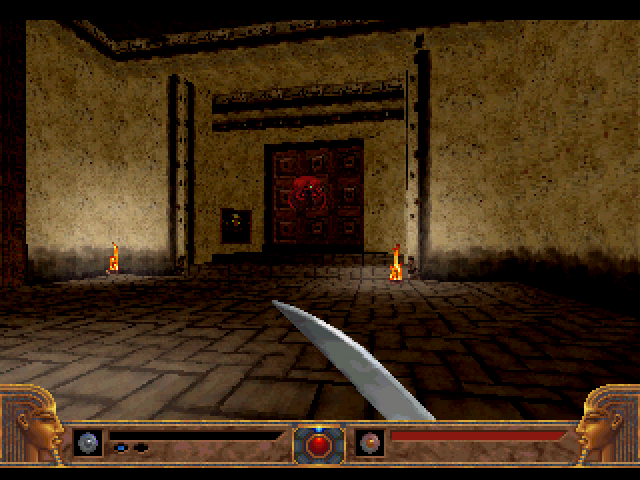
Before GoldenEye and Halo revolutionized the genre, PowerSlave (known as Exhumed in PAL territories and A.D. 1999: Pharaoh’s Revival in Japan) stood as the best first-person shooter developed specifically for the console market. The ancient Egyptian setting is nothing out of the ordinary, but the game expanded upon the usual “find keys to open doors” progression that most DOOM clones used and took inspiration from adventure games like Metroid. During the game, players acquire various artifacts in order to gain new abilities. This allows them to jump higher, levitate, breathe underwater, walk on lava, and pass through force fields in order to reach previously inaccessible areas. The platforming sections in PowerSlave feel more natural than most other first-person shooters from the era, and the sense of momentum is especially noteworthy. When running around corners, the camera tilts slightly to further accentuate your inertia. The DOS port of PowerSlave was somewhat disappointing, but the original Saturn version was one of the most impressive 3D games ever released on the console and the PlayStation version was almost as good. Lobotomy Software would later use the PowerSlave engine for their stellar Saturn ports of Quake and Duke Nukem, but the studio was closed before PowerSlave 2 ever saw the light of day.
3
Rocket: Robot on Wheels
Nintendo 64 (1999)
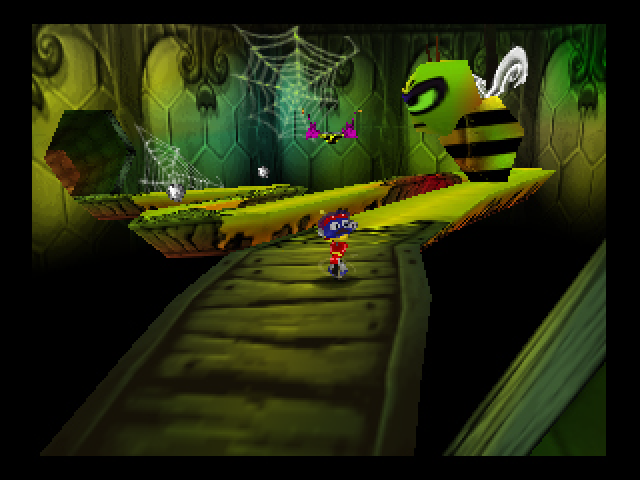
Rocket is a fantastic 3D platformer that fell victim to an over-saturated market. The game stars a bizarre robot name Rocket who uses a built-in unicycle to get around. Throughout the game, Rocket also has the opportunity to ride around in a hotdog-shaped go-kart, a hovering paint cannon, a mechanical swordfish, a magic carpet, and a flying motorcycle. Of course, no platformer would be complete without a mine cart section. Rocket has no arms and instead makes use of a grappling beam that can either be used to move objects around or to swing from poles, tree branches, and light fixtures. Rocket also gains new abilities as the game progresses – including a freeze ray that allows him to create platforms on water much like the ice flower from Super Mario Galaxy. The game is notable for a surprisingly deep physics engine. Items will bounce and roll around when you throw them, objects will bob up and down in the water, and floating platforms will tilt and turn in accordance to your weight when you jump on them. The gameplay is extremely varied. One minute you’ll be playing tic-tac-toe with a giant chicken, and the next you’ll be throwing a sheep against a thorn bush to use as a makeshift platform. Whether you’re jumping into vats of paint to disguise yourself or building your own roller coasters in an amusement park, Rocket never stops surprising. Consumers really missed the mark with Rocket, but its developer (Sucker Punch) would later see some much-deserved success with the Sly Cooper games on the PlayStation 2.
2
Trap Gunner: Countdown to Oblivion
Sony PlayStation (1998)
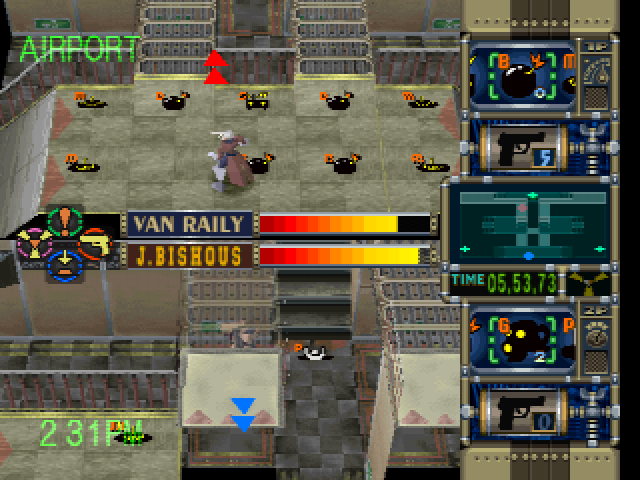
Trap Gunner: Countdown to Oblivion is an obscure game that was developed by Racdym and published by Atlus. It’s a difficult game to describe because it doesn’t really fit into any genre, but it’s basically an arcade-style action game that focuses on strategy rather than pure reflexes. If you want a comparison, the closest I can make would be Spy vs. Spy for the NES. The premise of Trap Gunner involves two secret agents battling each other in small arena environments. The characters each have relatively weak mid-range and melee attacks, but the primary method of attack involves setting traps for your rival. These traps include pits, throwing panels, gas bombs, and explosives aplenty. With some strategic planning, you can catch an opponent in a sequence of traps and make them feel like they’re stuck in some sort of bizarre Rube Goldberg machine. There are ways to spot traps ahead of time and disarm them, but it’s not always easy to do so in the heat of battle. Trap Gunner can be played against a computer-controlled opponent, but the split-screen two-player mode is where the game truly shines.
1
Beetle Adventure Racing
Nintendo 64 (1999)
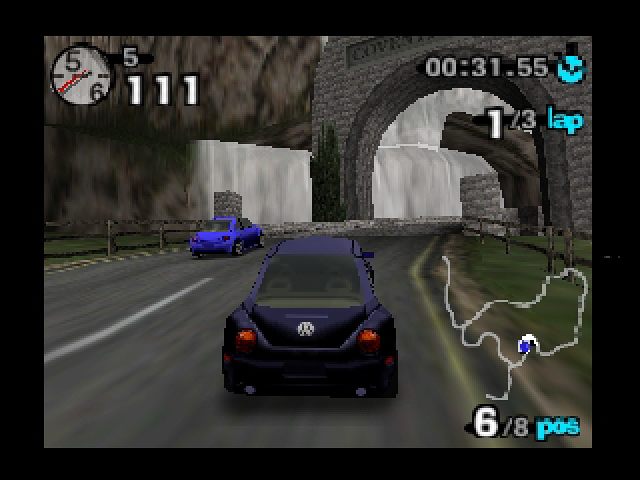
Not only is Beetle Adventure Racing one of the best-looking N64 games, but it also features some of the best play mechanics ever seen in a racing game. The controls could be described as a perfect marriage of Need For Speed and San Francisco Rush. Your selection of cars is limited to Volkswagen Beetles, but what the game lacks in vehicles it more than makes up for with the variety in the levels. Simply put, Beetle Adventure Racing has some of the best track designs ever seen in a racing game. The courses are massive and loaded with secret paths. Many of these hidden paths even have there own alternate routes within them! If you get bored of the main road, you can take a shortcut through an abandoned mine or through the lobby of a hotel. You’ll also find alien space ships, giant dinosaurs, and massive jumps to drive off of. A ton of unlockable cheats and several enjoyable multiplayer modes cap off this great game. Beetle Adventure Racing was developed by Paradigm (who also developed Pilotwings 64) and it was arguably the best N64 exclusive that wasn’t made by Nintendo or Rare.

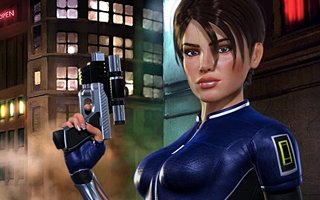
Do you agree with this list? Let us know what you think by leaving a comment below. Your opinion matters!